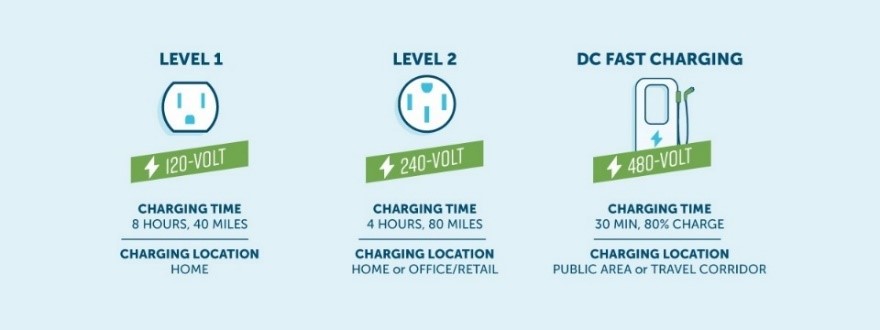Plug-in electric vehicles (EVs) offer a lot of benefits from saving money to reducing greenhouse gas emissions and other air pollution. There are plenty of other questions about EVs and we provide answers to a few of the basics – what types of models are on the market in Wisconsin, how to charge EVs, and the benefits to you and your community.
EV Basics
EVs are either fully or partially charged by electricity. A battery electric vehicle (BEV) is fully charged by electricity and can also be referred to as an all-electric vehicle (AEV). Many fully electric models on the market have more than 200 miles of range. When choosing a BEV, it is important to consider that heating up the interior of your car in Wisconsin winter conditions could reduce range by 40% making it closer to 125 miles in cold weather.
A plug-in hybrid electric vehicle (PHEV) is powered by an electric battery and when the battery range is exhausted, a combustion engine powered by gasoline kicks in. Typically, PHEVs have a shorter range in all-electric mode than BEVs, though the gas engine still provides plenty of range if the battery is low. Explore the many electric cars available today.
What type of EV is best for you and what to expect?
|
BEV |
PHEV |
|
|
EV Charging
Most EV drivers charge their vehicles at home or work, but public charging is also used to support longer trips. EV charging is supported through electric vehicle supply equipment (EVSE) or simply, chargers. The image below illustrates the three different types of chargers and their main differences.

- Level 1 is the most common EV charger. It only requires a standard 120-volt outlet making it easy to charge an electric vehicle anywhere you can find a grounded outlet. 80% of EV charging happens at home because of convenience and cost.
- Level 2 provides faster charging, requires installation of a 240V charger, and in some cases, your home’s electrical capacity may need to be upgraded. Utilities such as Madison Gas and Electric, Barron Electric Cooperative, and East Central Energy provide residential rebates for purchasing and installing Level 2 chargers.
- Direct current (DC) fast charging is much more expensive to install and operate. These units convert alternating current power to DC power and are mainly used for charging EVs in public places and high-traffic travel corridors.
- If traveling far with your EV, be sure to know where the charging locations are located along your route.